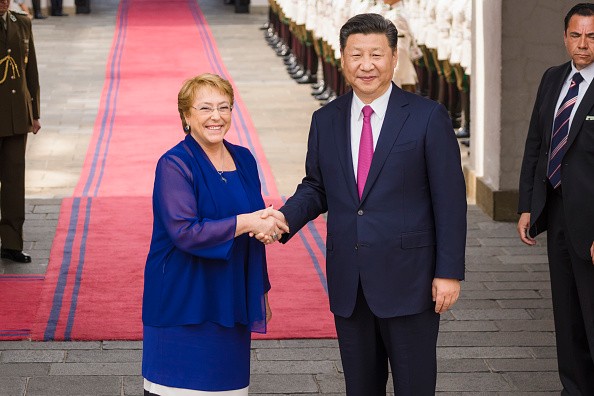In an interview with the state-run Xinhua News Agency, Juan Esteban Matusalem, President of the Chile-China Chamber of Commerce, Industry and Tourism (CHICIT), said that the China-Chile free trade is an exemplary model.
Chile will be hosting a summit where a plan for the future trade relations in the Asia-Pacific region might be made. The world is eyeing on Chinese contributions to the High-Level Dialogue on Integration Initiatives in the Asia-Pacific: Challenges and Opportunities.
According to the expert, "countries cannot simply remain with their arms crossed, especially if their interests to deepen economic cooperation happen to coincide."
"China, Chile and other countries of the Asia-Pacific region that share this vision must be ready to make all needed efforts to advance in this line," said Matusalem.
The benefits of free trade are apparent in the China-Chile relationship.
"The bilateral free-trade agreement has shown itself to be one of the great achievements between Chile and China. Furthermore, the constant efforts to deepen it reflect the opportunities to deepen business at all levels," the business leader said.
For Matusalem, the "pragmatism" of economic ties between China and Latin America is an implication of strong China-Chile economic cooperation.
China succeeded the European Union in 2014 as Latin America's second largest trading partner, according to the UN Economic Commission for Latin America and the Caribbean (ECLAC).
70 percent of the region’s export basket to China is concentrated on only five products, Matusalem highlighted.
"Our challenge is to continue diversifying the quality of our exports, but also to move beyond raw materials toward value-added or other manufactured products. An important step for this is cooperation in science and technology, in fields ranging from astronomy to telecommunications," he said.
Matusalem also mentioned the evolution of China-Chile free trade since a bilateral free trade agreement (FTA) was implemented.
"Before the bilateral FTA, more than 90 percent of Chilean exports to China consist of copper and its derivatives. Since 2006, it has been overhauled. Currently, sectors such as fruits, wine, processed foods and forestry goods are growing in importance. In 2016, the largest growth was for agriculture, forestry and fishing, which grew 42 percent. Fruit exports grew 52 percent," he said.
The CHICIT president also believes that it is essential for Chile to uphold the image of a country prepared to provide the growing needs of China.
"Professional services are an area where our country can succeed very well, especially given the major transformation of the structure of China's development. Then come the enormous opportunities in the tourism sector," said Matusalem.
The Pacific Alliance has a great interest in building ties with China in various fields. The alliance includes Chile, Colombia, Mexico and Peru.
"China is one of the main trading partners of each Pacific Alliance member," Matusalem added.
He suggested that the alliance should "consolidate a large-scale economic platform, allowing its countries to present a common front to Chinese investors" for the multilateral partnership to develop.
"It will certainly facilitate the creation of global value chains between players in various economic sectors. It is the challenge lying before us," the CHICIT president added.
China-Chile free trade continues to strengthen ties between the two countries, bringing success to both economies.



























